Before Kate and I went to Paris in 2010, a good friend visited one of my digital-infrared exhibits and– the following Christmas– gave me a Nikon CoolPix 990 that he’d converted to digital-IR! The camera may only have a 3.4MP sensor, but it’s still a favorite IR shooter.
Here are 5 (+5) favorite shots from my Roving CoolPix 990’s adventures in Paris. (They aren’t post-processed or colorized in any way.)
“Vintage” Notre Dame
Below is the first infrared photo that I took in the city. The “native” IR tones rendered by the camera’s CCD sensor were gorgeously “antiquarian”… and certainly suited the subject. I also love how beautifully the camera rendered a gloomy sky:
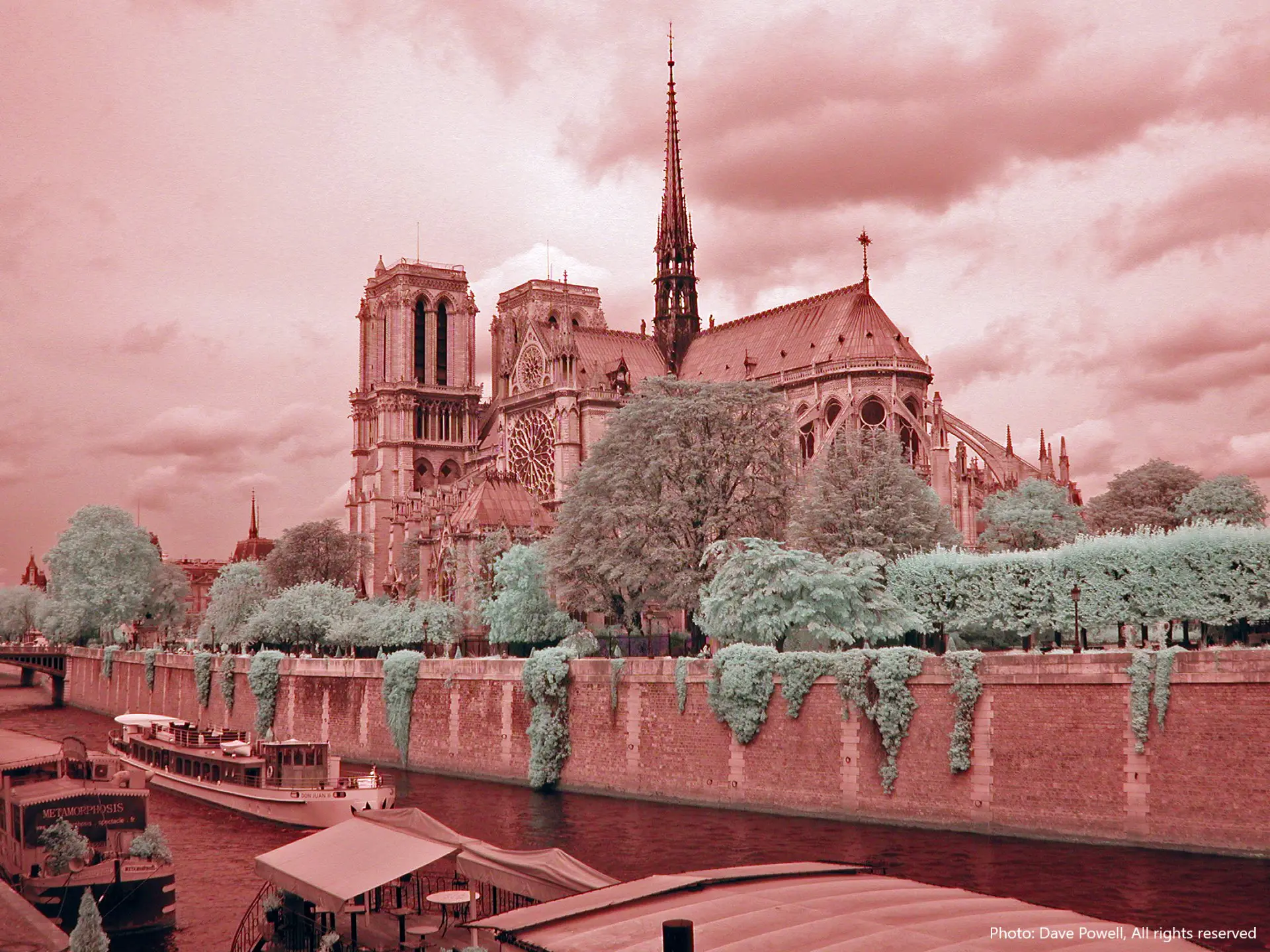
Shot only a few years before Notre Dame’s terrible fire, this remains one of my favorite IR images and a cherished souvenir of our trip.
“The” Tower
One must get close to the Eiffel Tower to appreciate how HUGE it is. Distant landscape views don’t do it justice:
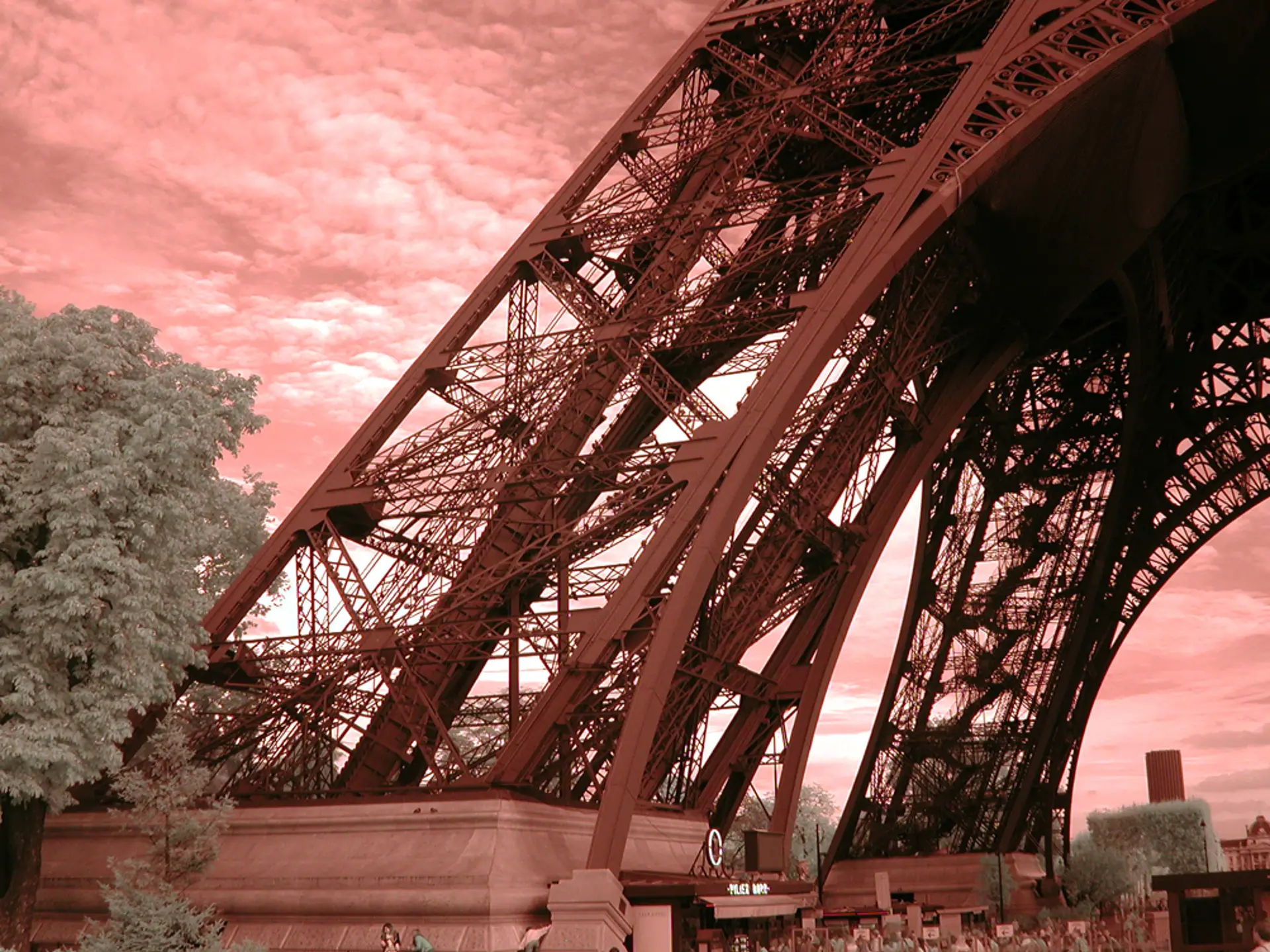
Yes, those are buildings at its feet– not pylons. And you can just make out people along the bottom of the photo.
As you see below, Le Jardins du Trocadéro offer one of the best spots in the city for viewing the Tower and its nightly light show:
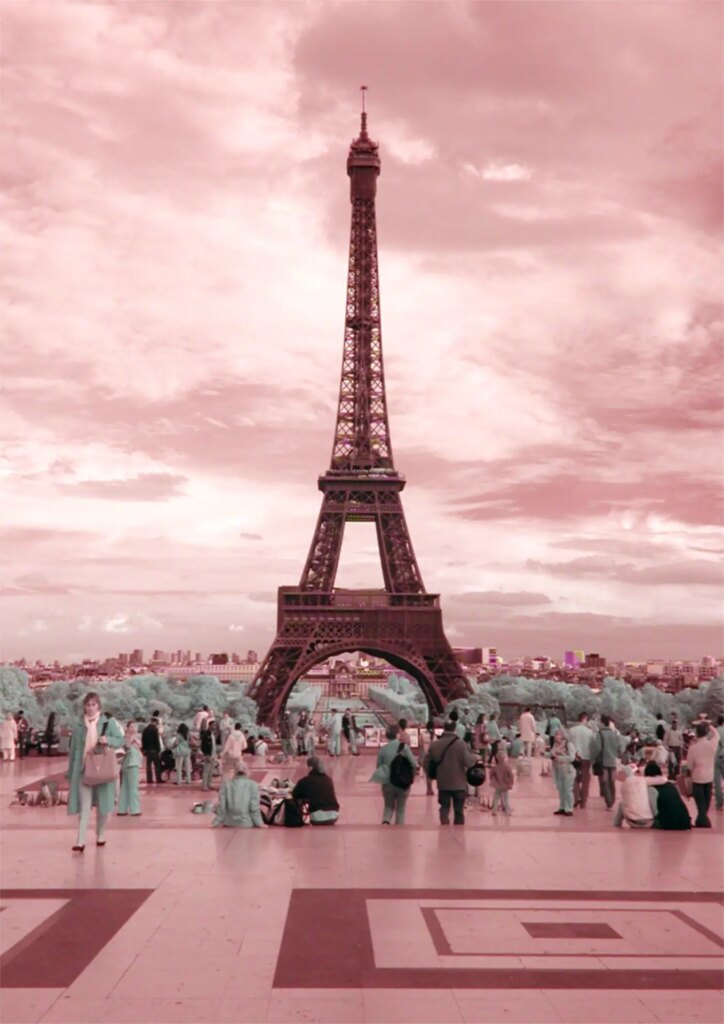
Note the “square bullseye” pavement patterns in the foreground. You’ll see them again later. Also note the Tower’s lower two viewing platforms. I took the following look-up shot from the larger, lower platform that’s just above the Tower’s massive arched legs:
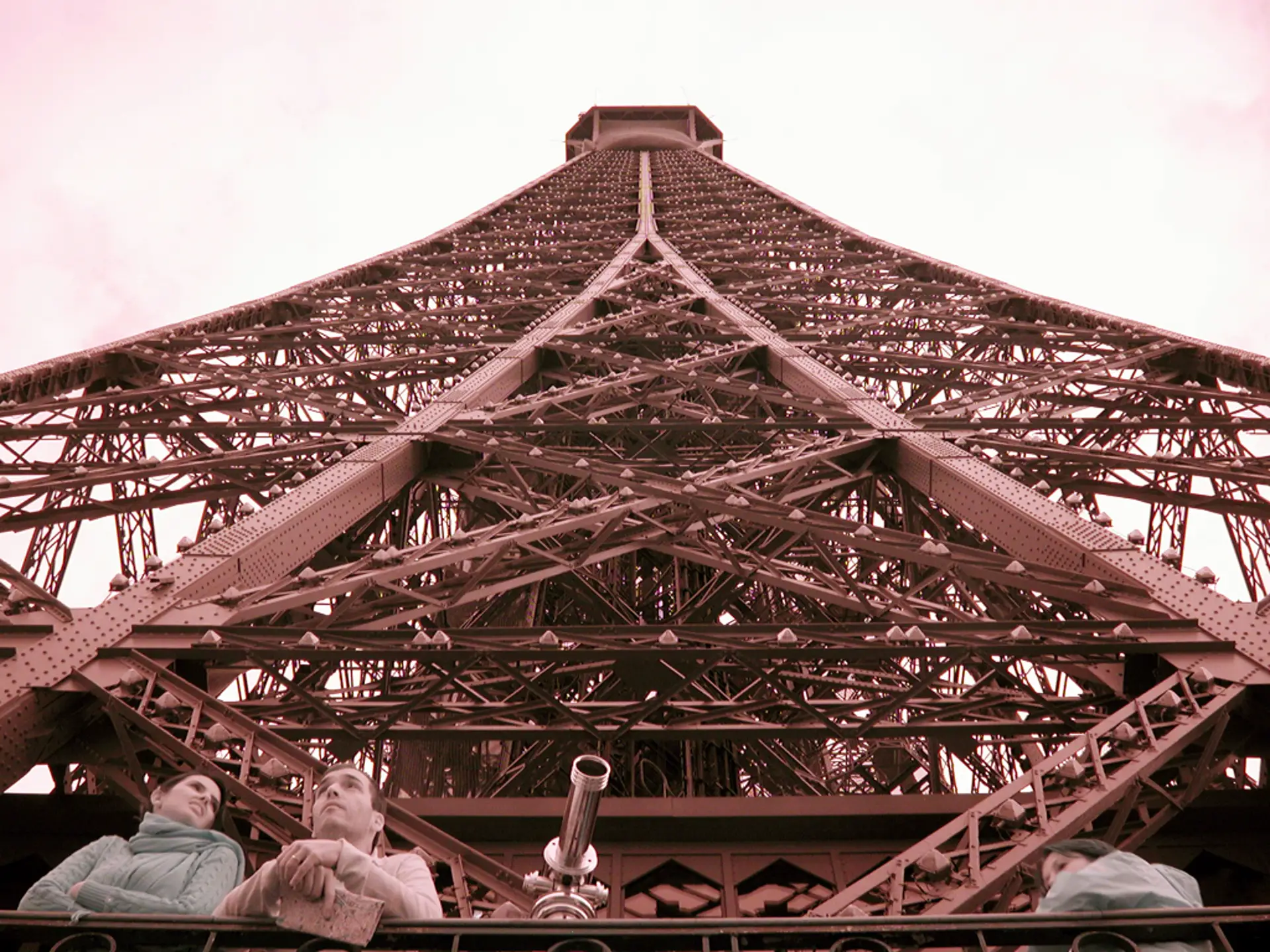
In these days of super-long zooms, 4X doesn’t seem like much. This couple was enjoying the vista from the Tower’s higher, smaller viewing platform. And as you can see in my distant view of the Tower, they were quite a ways above me!
But the CoolPix 990’s 4X zoom did an awesome job. It also captured a striking “wishbone-beam” architectural feature that I’d never noticed before. Though it stands out above, it’s nearly invisible in distance shots.
And here’s the view back toward the Trocadéro from the top of the Tower. I was frankly astounded that my fear of heights never kicked in. (The massive open-air girders all around me no doubt helped.):
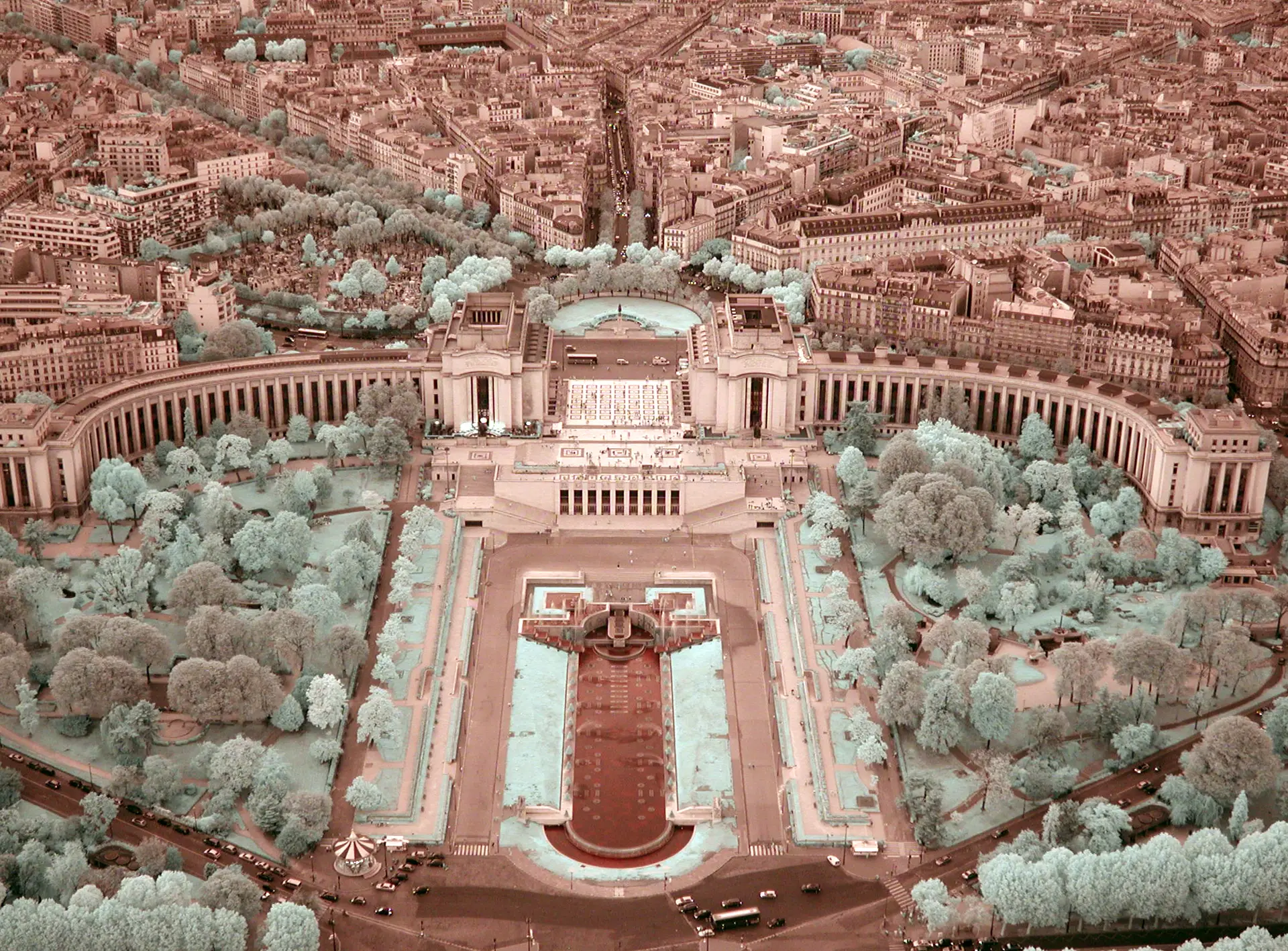
If you look closely at the ground between– and slightly in front of– those curved colonnades, you can just make out the three “square bullseye” pavement patterns that I mentioned before. In that earlier shot, the Tower looks very close, but as you see here, it’s not.
Created for the 1937 World’s Fair, the Trocadéro gardens cover nearly 10,000 square meters of green space in the heart of the city. Water fountains abound. And by December, the entire area transforms into a holiday paradise that must be experienced.
Les Bouquinistes
Since the 16th century, sellers of used/antiquarian books, maps and prints have set up shop along both sides of the Seine: on the Right Bank, from the Pont Marie to the Quai du Louvre, and on the Left Bank, from the Quai de la Tournelle to Quai Voltaire:
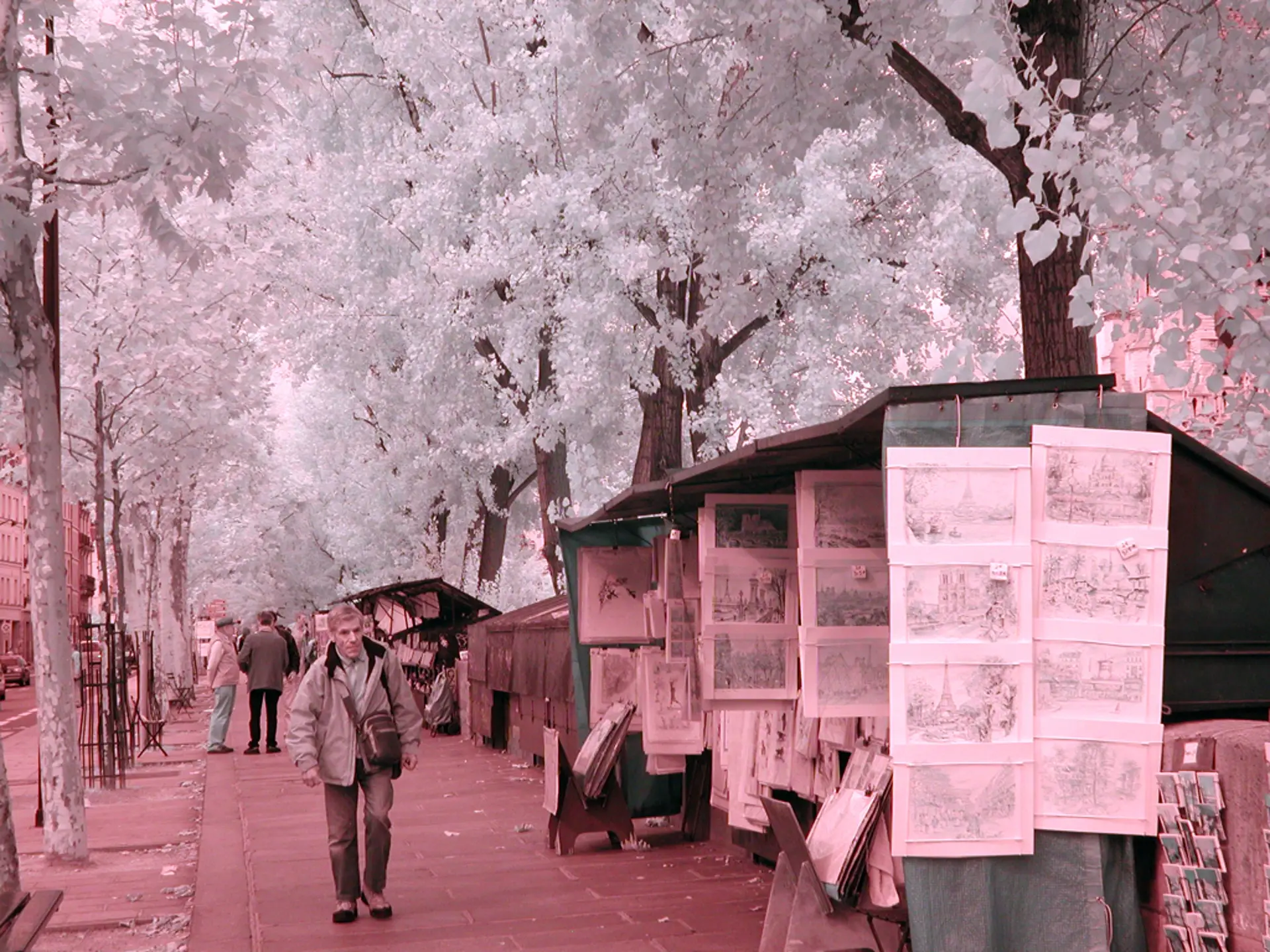
According to the Bouquinistes’ wiki page, this is why the Seine is often called “the only river in the world that runs between two bookshelves.”
In a “Perfume Garden”
I don’t know how this garden is used today, but when we visited, it showcased the wide variety of plants used in French perfumes!:
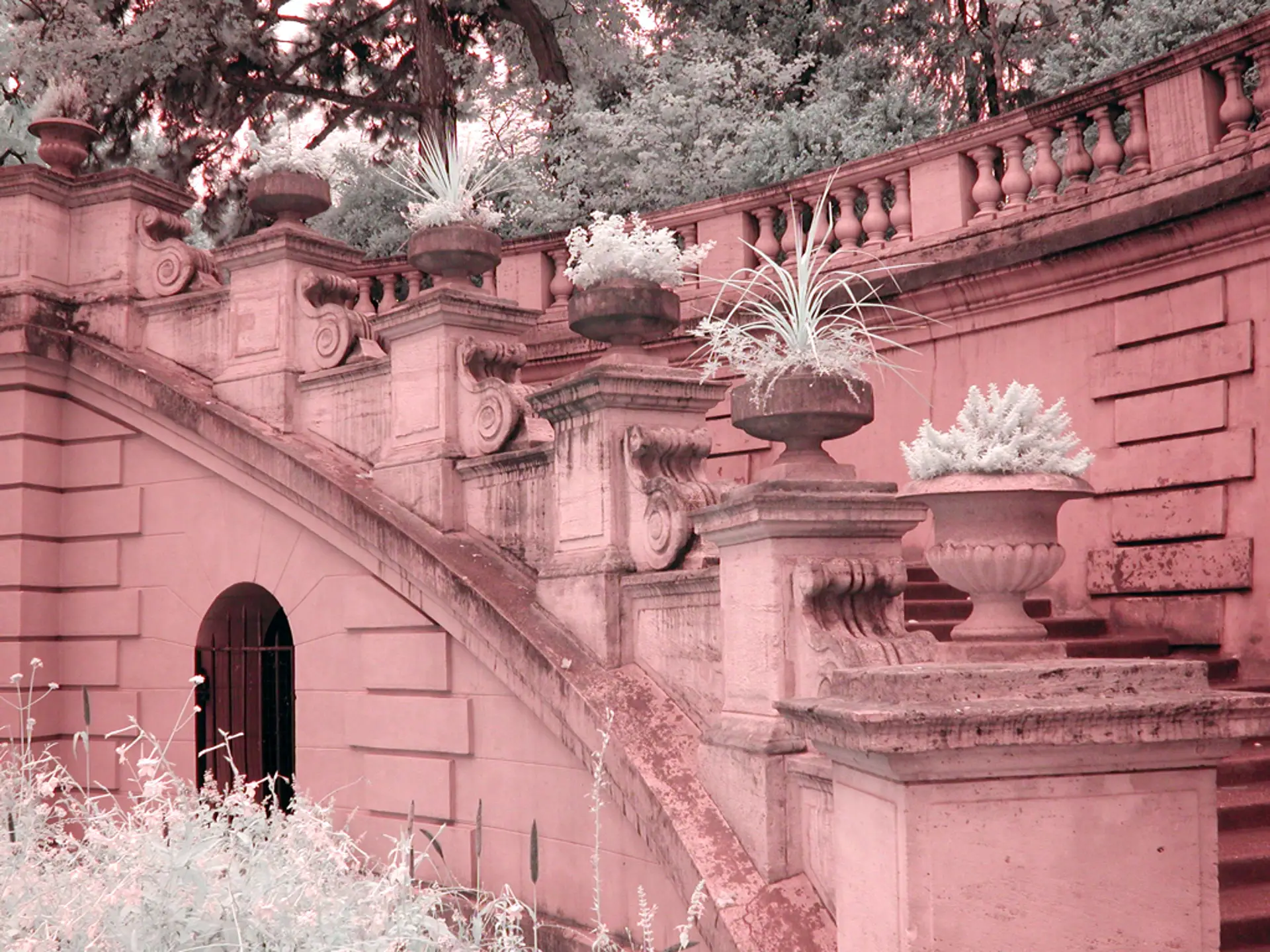
There’s also a charming view of the Eiffel Tower from here.
Le Parc des Buttes-Chaumont
Spanning 61 acres in the 19th arrondissement, this is one of the largest and most unique parks in the city. But prior to its 1867 opening (during Napoleoon III’s regime), it was a horrific place where nobody wanted to go:
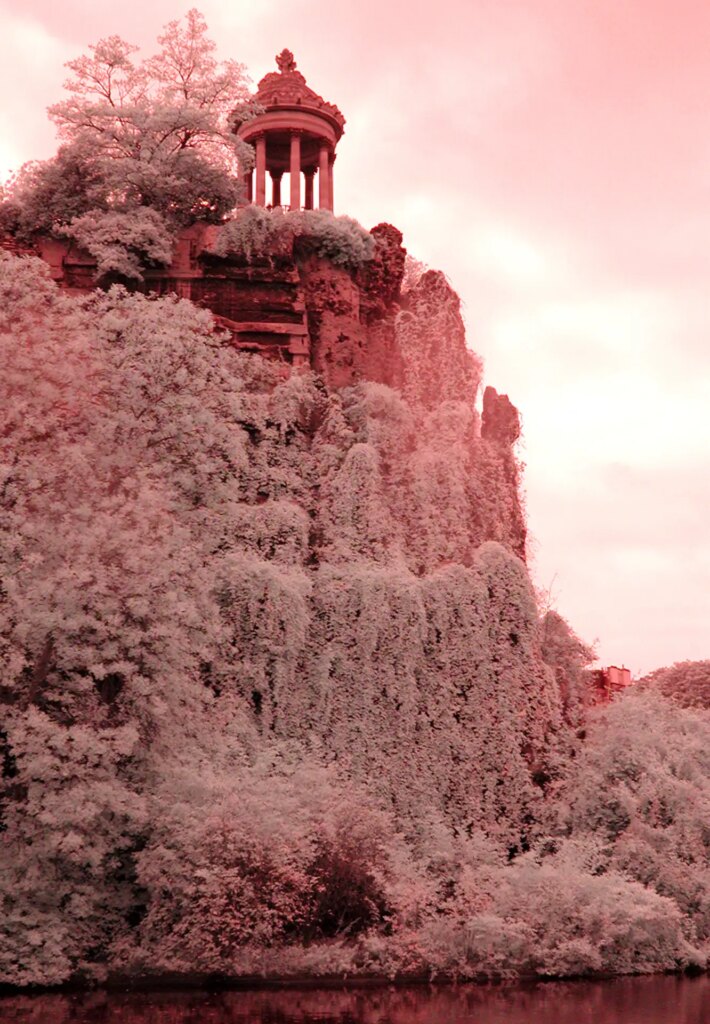
That’s because, at various times, the area had hosted a stone quarry, city dump, horse abattoir, and gibbet building (where criminals were executed and their bodies displayed to discourage potential neer-do-wells).
But during his transformation of the city into the beautiful place we now enjoy, Baron Haussmann (the Prefet of Paris) utterly transformed this eyesore area into a fascinating man-made park. Even its benches are made from faux-bois (fake-wood) tree branches and logs.
And atop its artificial mountain rising from a man-made lake, the Temple de la Sibylle seen above has become a popular spot for formal wedding photos– if one can handle the 50-meter climb in tuxedos, suits and wedding dresses!
Le Musée Bourdelle
This museum and sculpture garden were Antoine Bourdelle’s studio from 1885 to 1929:
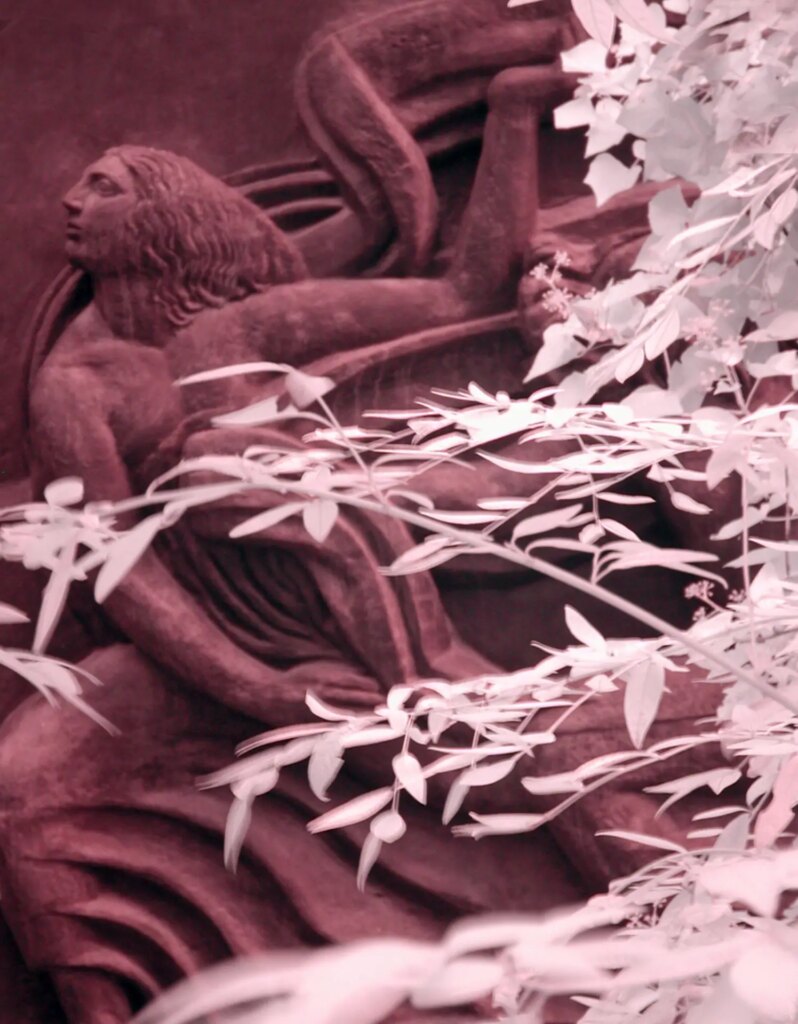
Bourdelle studied under Auguste Rodin, and taught both Alberto Giacometti and Henri Matisse. He also created the beautiful bust of Gustave Eiffel that’s installed at the base of “The Tower.” Lovers of Art Deco and Beaux-Arts sculpture will delight in the 15th arrondissement’s Musée Bourdelle.
Des Galeries Lafayette
Digital infrared doesn’t always work well indoors. So in this spectacularly beautiful shopping destination, I decided to see what would happen if I removed the camera’s opaque IR filter. In a word… magic!:
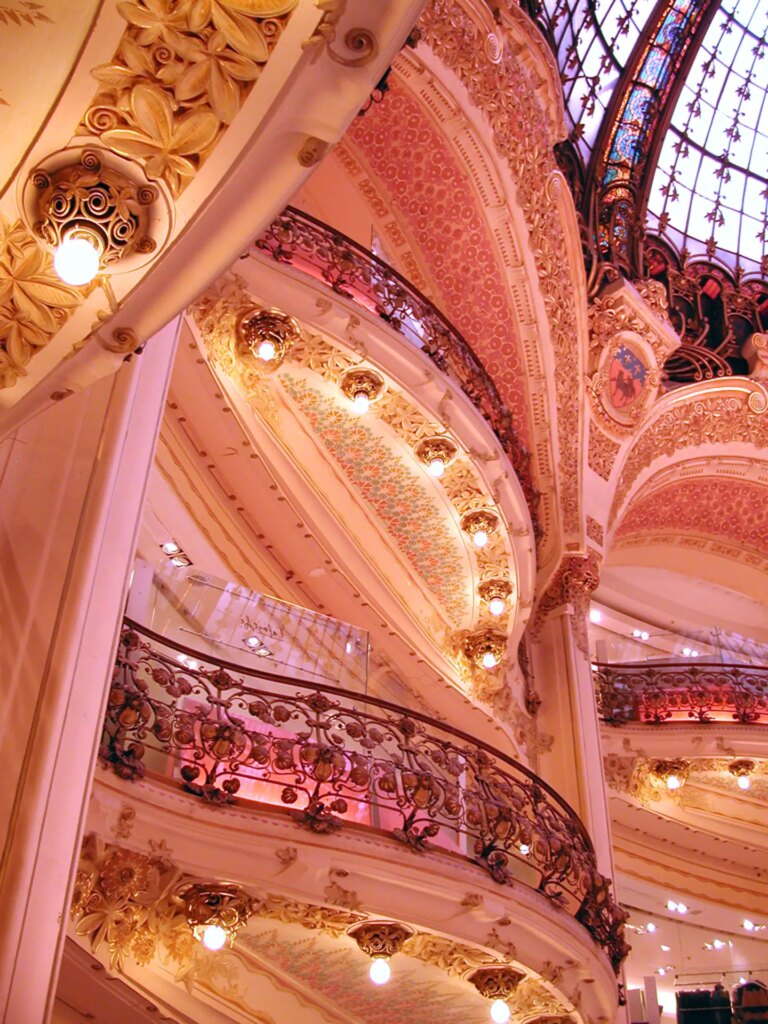
I don’t think anyone would dispute Paris’s classic beauty. And my Roving CoolPix 990 only seemed to enhance it.
Next Time: Venice!
–Dave Powell is a Westford, Mass., writer and avid amateur photographer.
Share this post:
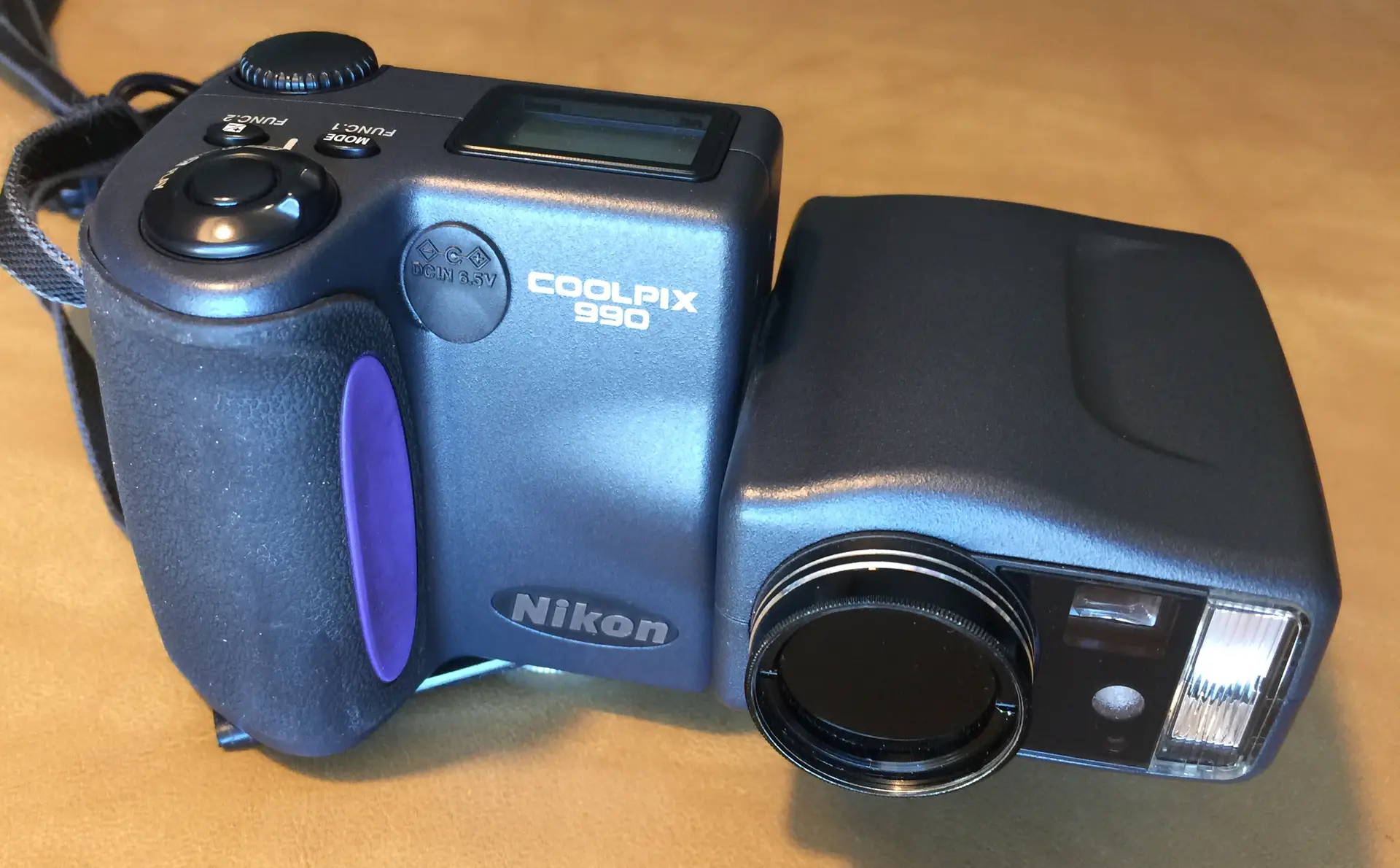








Comments
Kurt Ingham on 5(+5) Digital-IR Frames from a Roving CoolPix 990 in Paris
Comment posted: 14/03/2023
Comment posted: 14/03/2023
Jim Grey on 5(+5) Digital-IR Frames from a Roving CoolPix 990 in Paris
Comment posted: 14/03/2023
Comment posted: 14/03/2023
Alan Withington on 5(+5) Digital-IR Frames from a Roving CoolPix 990 in Paris
Comment posted: 14/03/2023
Comment posted: 14/03/2023
Agata Urbaniak on 5(+5) Digital-IR Frames from a Roving CoolPix 990 in Paris
Comment posted: 14/03/2023
Comment posted: 14/03/2023